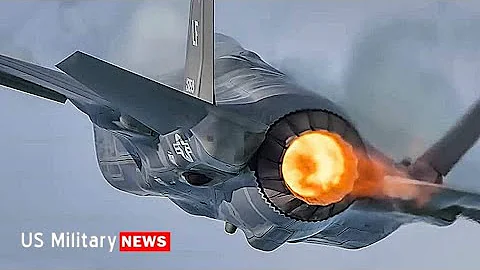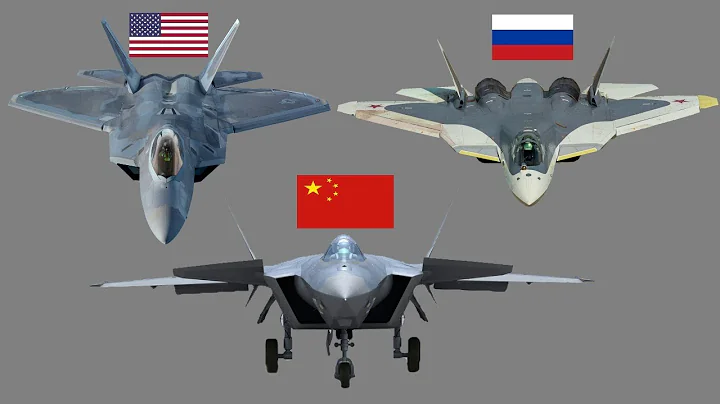
India's "AMCA Advanced Medium Fighter " - a model aircraft with high ambitions and low hands
The earliest fifth-generation aircraft project that India participated in was the joint development of Su-57 fighter aircraft with Russia. India invested funds and Russia was responsible for the research and development. However, because India was unable to reach an agreement with Russia on technology introduction, and the price and prospects of the Su-57 were not optimistic, India chose to withdraw from the project and instead develop its own fifth-generation aircraft. The

AMCA plan was born out of the medium fighter plan (MCA) and was renamed AMCA in 2010, relaxing the aircraft tonnage from 15 tons to 25 tons. The plan aims to develop a stealth twin-engine medium fighter to replace the outdated "Mirage 2000" and "Puma" fighters and serve as a complementary enhancement to the Su-30MKI. Since the wind tunnel model design was completed in 2009, the plan has stayed in the model design stage for a long time. The project definition and preliminary design phase of AMCA began in 2013, with the initial model finalized in late 2014 after wind tunnel testing and radar scattering area testing. In 2015, the basic design configuration of the aircraft was completed and a detailed AMCA plan report was submitted to the Indian Air Force. After many improvements, the AMCA project completed the project definition phase in 2017, and the project has been in the detailed design phase since 2018. As for the originally expected first flight in 2017, it has long been thrown out of the window. According to the schedule of the Aeronautical Development Authority of India (ADA), the launch of the first AMCA will not be until 2026.

Indian Defense Minister Rajnath Singh viewed the AMCA model
The most eye-catching aspect of the AMCA plan is its ultra-high performance requirements. In fact, the AMCA is called the "5.5th generation fighter" by India, and the aircraft will be divided into Two models. The Indian Air Force hopes to turn the MK-2 into a "sixth generation aircraft" to achieve a great leap forward in aviation combat capabilities. We must know that the number of fifth-generation aircraft is still very small, and China, the United States and Russia can produce production equipment. The concept of sixth-generation aircraft does not even have a clear definition internationally. AMCA will have almost omnipotent super performance. Not only will it have the supersonic cruise, stealth and situational awareness capabilities that a fifth-generation aircraft should have, but it will also use artificial intelligence assistance and have powerful electronic warfare and ground strike capabilities. . Judging from the performance on paper, it is much more advanced than the fifth-generation aircraft currently in service.

Having ambitious goals is great, but having the ability to achieve them is even more important. In fact, India simply does not have the industrial strength to support such an ambitious aviation plan. With the help of French Dassault , it took thirty or forty years for the LCA light fighter to be developed. With such low design and production capabilities, trying to build the world's top fighter jets overnight can only be said to be a failure of vision and ambition. AMCA will most likely end up in vain.
Japan's "F-X" - a cooperative project in the shadow of the United States
Japan's fifth-generation machine can be said to have been "although it cannot be achieved, the heart is longing for it." Japan has repeatedly raised the possibility of purchasing F-22s, but has been rejected by the United States. Although Japan successfully sought the introduction of the F-35 from the United States in 2011, the real ideal target aircraft in Japan's mind is still the F-22. In addition, in order to protect its own military aviation manufacturing industry, Japan has been committed to developing its own fifth-generation aircraft, and has produced the result of the "Advanced Technology Demonstration Machine" X-2 "Shin".

However, "心" only completed 32 test flights.On October 31, 2017, the Japanese Ministry of Defense announced that the X-2 had completed its last test flight and would suspend the test flight. After analyzing a large amount of data accumulated during the X-2 test process, it will ultimately determine whether Japan's next-generation fighter aircraft will be independently developed. , or take the path of joint research and development. On October 31, 2020, the Japanese Ministry of Defense announced that it had officially signed a research and development and manufacturing contract with Mitsubishi Heavy Industries for the next generation stealth fighter, namely F-X. Lockheed Martin will participate in Mitsubishi Heavy Industries' F-X development work. In addition to Lockheed Martin, the Japanese government is also seeking to solicit bids from other European and American aviation suppliers to reduce research and development difficulties.

Judging from the appearance announced in the 2020 next-generation fighter budget, the F-X has fully absorbed many configurations proposed by the 2010 "I3 fighter" stealth fighter project and the British "replica" stealth technology demonstrator design. There is not much problem with the design, but even if a large amount of money is invested in the development of basic equipment and technology for fifth-generation fighter jets in advance, foreign assistance will still be needed in terms of stealth technology, engines, etc. Therefore, Japan seeks technical assistance from Lockheed Martin and is actively seeking support "around the world."

I3 Many ideas from the time of fighter
From the perspective of research and development feasibility, F-X is far more reliable than India's unconventional model, and it has development prospects if everything goes well. But the biggest problem is that, as a slave country of the United States in Asia, Japan's national sovereignty is incomplete, and its armaments largely depend on the face of the United States. The F-2 originally envisioned by Japan was also a relatively advanced fourth-generation machine. Under the interference of the United States, it finally became an enlarged version of the F-16 that was expensive and had unsatisfactory performance. The United States hopes that Japan can fully rely on it, thereby completely tying Japan to the interests of the United States, but Japan wants to pursue "autonomy" as much as possible. Therefore, although the ideal F-X will become a self-developed fifth-generation aircraft suitable for Japan's national conditions, under the shadow of the United States, it is difficult to say how many compromises will be made in the end.
South Korea's "KF-21" - the "semi-stealth" after compromise
As a slave country of the United States in the Asia-Pacific region, South Korea also faces the same dilemma as Japan. In addition, South Korea's aviation industry is not particularly developed, so South Korea simply gave up its pursuit of fifth-generation aircraft and settled on developing so-called "4.5-generation aircraft". This compromise was not ineffective and greatly reduced the difficulty of project development. The final result was the KF-21.
Initially, South Korea also planned to build the KF-X as a stealth fifth-generation aircraft. However, in 2009, the Weapon System Concept Development and Application Research Center of Konkuk University evaluated the KF-X project and believed that if the standards of the KF-X were lowered to With four and a half generations, the development of KF-X will be feasible. On the one hand, with North Korea as the imaginary enemy, the capabilities of the fifth-generation aircraft appear to be somewhat excessive. On the other hand, the stealth technology of the fifth-generation aircraft, such as built-in bomb bays, is too demanding for South Korea and is difficult to complete without technical support. In the end, KF-X was downgraded to a fourth-and-a-half-generation project. Korea Aerospace Industries (KAI) was responsible for project development, and Lockheed Martin provided technical and personnel assistance. The entire project is expected to cost US$15.1 billion, of which the Korean government will contribute 60%, and Korean companies and Indonesian companies participating in the project will each contribute 20%. The most direct impact of the downgrade of

is that the invisibility is definitely far less than that of normal fifth-generation machines. KF-X adopts a unique semi-buried pylon design. Compared with ordinary external pylons, its stealth is certainly improved, but it is far less than the built-in bomb bay. Moreover, its project is expected to cost only 15.1 billion, which is insufficient compared with the F-35 project investment of more than 50 billion. Koreans who know how much they weigh have chosen to "bring" or assist in the development of equipment from foreign countries to use on the KF-X, such as the active phased array radar (AESA), infrared tracking and detection assisted by the United States. (IRST) probe, US-supplied engines, British ejection seats and more. As a result, the localization rate of the aircraft is only about 65%, and most of the key equipment relies on Western suppliers. However, this kind of "accumulation" behavior can be regarded as reducing research and development risks. The roll-off ceremony of the first prototype of the project was held on April 9, 2021. At this time, it already had a new name-KF-21.

However, the prototype was dismantled in less than two months. Most likely because the KF-21 itself was not yet mature, the prototype was just to keep Indonesian investors optimistic about the progress of the project. Keep throwing money at it and improvise it. Moreover, as fifth-generation aircraft become more and more popular, especially when there is a bargain like the F-35, which is sold everywhere, the significance of South Korea's "saving" of parts from everywhere to build a "fourth-and-a-half-generation" is worthy of a question mark. .
Why can China develop a real fifth-generation aircraft
After introducing the development of new fighter aircraft by India, Japan and South Korea, we will find that they have encountered some problems more or less. It is very difficult to develop a fifth-generation aircraft. thing. Compare them with the J-20, then why can China develop the J-20 relatively smoothly?
First of all, China has a complete and relatively advanced aviation industry. Although when the J-20 project was established, China's aviation foundation was still very weak compared to major aviation countries such as the United States and Russia. However, if compared with India, Japan and South Korea, China has rich experience in designing various aircraft, while India, Japan and South Korea have basically Only with the help of other countries, one or two types of military aircraft have been developed. Moreover, China's aviation industry has a complete category. Although various components cannot be top-notch, they at least have independent production capabilities. On the other hand, India and South Korea have too many technical deficiencies and have to use a large number of foreign ready-made products. Fifth-generation aircraft technology is a secret involving the core technology in all countries. It is naturally impossible to rely on foreign technical assistance to build a fifth-generation aircraft.

Japan's self-developed F-2 is simply an enlargement of the F-16 body under the "coercion" of the United States, and then uses every opportunity to apply some of its own advanced technologies.
Secondly, China has complete national sovereignty. Unlike South Korea and Japan, China is not restricted by the United States in everything it does. It also relies on the United States to ensure national security, and its military is only a servant of the United States. Needless to say, Japan's experience of being cheated by the United States when developing the F-2. The "Shin" demonstrator aircraft invested approximately 40 billion yen in the early stage and spent decades developing early stage technology and engines. As a result, it was dismantled after flying 32 times. The answer is likely to be the result of pressure exerted by the United States. In this situation where national defense is completely handed over to the United States, as long as the United States wants to kill its plan to independently develop fifth-generation aircraft, it will naturally be impossible to succeed.

As long as these countries rely on the United States for defense, the United States will never allow them to independently develop advanced military technology
Summary
The performance of fifth-generation aircraft as the forefront of the current aviation industry tests a country's comprehensive national strength and industrial technology level. Facts have proved that at present, only powerful countries can afford fifth-generation aircraft and allow them to truly demonstrate their strength. China's ability to successfully develop the J-20 and achieve mass production (it is reported that the current number of J-20s has reached 150) shows that China has entered the ranks of world powers.





















